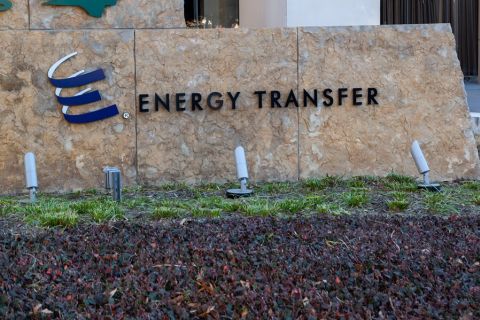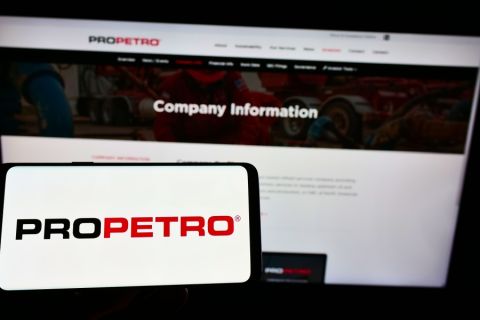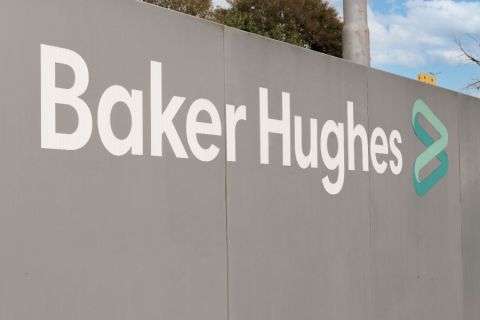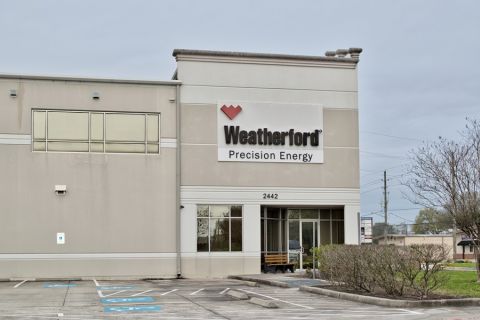UK-based independent Tullow Oil Plc’s largest activities are in Africa, with other interests in Europe, South Asia, and South America. In June 2007, the oil and gas explorer recorded its largest ever discovery – the Jubilee field offshore Ghana – a large continuous accumulation of light sweet crude oil in Cretaceous turbidite sandstone fans.
Earlier that year, Tullow had completed the purchase of Hardman Resources Ltd., making it the operator of the deepwater Guyane Maritime exploration license in French Guiana on behalf of the joint venture consisting of Shell, Total, and Northpet Investments. French Guiana is an area of South America with no history of oil or gas discoveries, but it is predicted to have the same potential source and reservoir rocks as those in West Africa.
A 2,500 sq km (965 sq mile) 3-D seismic program was completed in February 2010 targeting the Eastern Slope section of the license, and in October 2010 a drilling target was identified in more than 2,000 m (6,562 ft) water depth some 150 km (93 miles) from the coast. Planning began for Zaedyus (GM-ES-1), the first exploration well, with the objective of testing whether the Jubilee play was mirrored on this side of the Atlantic.
Two wells had been drilled in shallower waters offshore French Guiana during the 1970s but had targeted different play concepts. No deepwater wells deep enough to have penetrated sections comparable to the target existed within several hundred kilometers.
Tullow chartered the Ensco 8503, a newbuild ultra-deepwater semisubmersible drilling rig. Following the successful completion of rig acceptance testing, the transit to French Guiana from the Gulf of Mexico (GoM) commenced in February 2011.
Tullow finalized the conceptual well design and made strategic direct awards for services leveraging off existing Ghana contracts while recognizing the service providers already incumbent on the rig. Schlumberger was selected to provide services for directional drilling, MWD/LWD, wireline logging, mud logging, drill bits, drilling mud, and some completion equipment.
To manage the project, Schlumberger appointed an integrated services project manager (ISPM) who coordinated an intensive pre-job planning and risk management process using systems developed by the company’s Integrated Project Management (IPM) business segment. The ISPM was the focal point for communications between Schlumberger and Tullow and all Schlumberger activities on the ground in French Guiana.
An office-sharing arrangement with the Schlumberger, Tullow, and Ensco personnel throughout the project ensured close collaboration on issues such as safety, emergency response, and spill response planning.
Operational challenges
In addition to being an extremely remote wildcat exploration well, planning for GM-ES-1 needed to address a range of technical and logistical challenges including:
- Remote location: The absence of local oilfield infrastructure; limited access to the local port facility; complex permitting issues both for material and personnel;
- Complex well design: 2,048 m (6,719 ft) water depth; a deep well directionally drilled with a water-based mud used to eliminate any risk to the environment;
- Sparse offset data;
- Strong ocean currents; and
- First well for a newly built rig.
Ensuring deepwater readiness
A project execution plan was developed following Schlumberger’s deepwater-specific processes. This standard defines all the required steps to be taken and the operational segment standards to be applied for a deepwater operation, focusing on project preparation and readiness. The project readiness assessment (PRA) tool was used to assess and monitor readiness in terms of exposure, complexity and processes, people and competency, and technology and equipment. The tool identifies issues that require remedial actions to reduce the chances of unplanned events and nonproductive time.
A project team of people qualified for the various drilling and formation evaluation requirements was assembled. Although the closest support base to the field operations was Trinidad, the PRA process identified the need to run the project with primarily GoM technical personnel to provide the best available deepwater experience. Many of the team members had completed a formalized curriculum of training and field experience and had proved their ability to meet the strict competency requirements of “Schlumberger Deepwater Certified” status.
A key operational challenge highlighted by the PRA was logistics. French Guiana had, at that point, a limited infrastructure for supporting offshore oil-field operations. The nearest established oilfield supply bases are in Trinidad, about two to four days transit depending on vessel speed. Most equipment was supplied via Trinidad from the GoM, and delivery time was typically around two to three weeks.
To reduce the risk of waiting on equipment, additional onsite backup tools were dedicated to the project and additional procedures were implemented to ensure proper maintenance and calibration over longer than usual periods. Wellbore casing supplies were extended to a level that could cope with sidetracks and other contingencies resulting from uncertain subsurface geology and pore pressure gradients. While drilling the well, the contingency casing design became the primary casing design for this well.
Logistics
Considerable preparation and customs paperwork were required to ensure the efficient transport of equipment in, through, and out of Trinidad, Suriname, and French Guiana. Strict rules exist regarding the import, transport, and use of sensitive materials on French territory, and it can take up to a year to prepare the necessary permissions. To obtain the permits faster, Schlumberger leveraged its global presence and hazardous materials experts in its research center near Paris to include the project materials in their permits, saving the time it would have taken to apply for new licenses. Permits also were obtained for transhipment of these materials through Trinidad.
Fuel was supplied from Trinidad and occasionally from neighboring Suriname via a fleet of platform support vessels supplied from Hornbeck Offshore, GulfMark Offshore, and Tidewater. Fresh produce was sourced locally in Cayenne and regularly flown to the rig. Ensco provided solutions for getting crews to the rig by chartering a weekly Boeing 737 return flight from New Orleans to Cayenne. NHV was contracted for helicopter support, and from its headquarters in Belgium it transported and assembled two helicopters in country.
The impact of and response to adverse weather conditions was among the many factors considered during the PRA. The mouth of the Amazon River is located to the south of the well location, and the project started during the rainy season, increasing the river’s flow. Strong northerly ocean currents sweep the resulting mixture of fresh and salt water up the coast of French Guiana.
During the project, the advanced dynamic positioning system onboard the Ensco 8503, combined with continuous monitoring of satellite-based weather forecasts, kept the rig on station in the strong and variable currents.
Drilling operations
A pilot hole was spudded in March 2011, three days after the rig arrived on location, to provide information about seabed conditions and mitigate potential hazards such as gas hydrates and shallow-water flows.
The GM-ES-1 exploration well was drilled vertically to 850 m (2,789 ft) in a 26-in. hole and then kicked off and built to 20° deviation. Achieving optimum mud weight was a major challenge. Several issues were encountered while drilling, including mud losses and two instances of stuckpipe due to unstable wellbore conditions. Sidetracks were required to overcome the challenges and reach the primary target, significantly increasing the costs of the well against the initial project estimate. The mud weight window became progressively narrower with depth, and optimal equivalent circulating density management became a critical factor. During the most difficult well challenges, Schlumberger assisted Tullow by providing additional tools and real-time monitoring services. These tools ensured the decision-making team in country could monitor all aspects of the well’s progress and ensure it met its objectives. The ISPM coordinated these additional monitoring services, leveraging internal contacts at short notice.
In September 2011, Tullow announced the well, by then drilled to 5,711 m (18,738 ft), had encountered 72 m (236 ft) of net oil pay in two turbidite sandstone fans. Wireline logs and fluid samples showed the well had encountered good-quality reservoir sands. Drilling operations continued, and the well eventually reached total depth at 6,059 m (19,880 ft). The reservoir section was then sidetracked with a 6 1/ 2 -in. hole, cored, and logged with a comprehensive program that included vertical seismic profiling.
The InSitu Fluid Analyzer system was used to provide accurate downhole measurements of hydrocarbon composition, gas-oil ratio, live fluid density and viscosity, COconcentration, fluorescence, and color, helping to optimize sample acquisition for subsequent laboratory analysis. The well was then plugged and suspended to enable it to be reentered and tested in the future if so desired. Throughout the drilling program, experts in an operations support center in Houston worked with the onsite team and Tullow staff, sharing real-time downhole data via a secure Internet collaboration system.
An exploration success
The GM-ES-1 well achieved Tullow’s objective of proving the extension of the Jubilee play across the Atlantic and made a significant new discovery for the company. This result reduces the exploration risk associated with Tullow’s prospect inventory offshore French Guiana, Suriname, and Guyana. An appraisal program and extensive follow-up exploration activities are now under way.
Despite the logistical and technical challenges of the project, no time was lost waiting for any equipment. While the sidetrack events caused an increase in the time taken to drill the well, with a corresponding increase in the cost of the well, no lost time incidents (LTI) were experienced during some 625,000 man hours worked, and the Ensco 8503 passed its one-year LTI-free milestone during the project.
Recommended Reading
Talos Energy Expands Leadership Team After $1.29B QuarterNorth Deal
2024-04-25 - Talos Energy President and CEO Tim Duncan said the company has expanded its leadership team as the company integrates its QuarterNorth Energy acquisition.
Energy Transfer Ups Quarterly Cash Distribution
2024-04-25 - Energy Transfer will increase its dividend by about 3%.
ProPetro Ups Share Repurchases by $100MM
2024-04-25 - ProPetro Holding Corp. is increasing its share repurchase program to a total of $200 million of common shares.
Baker Hughes Hikes Quarterly Dividend
2024-04-25 - Baker Hughes Co. increased its quarterly dividend by 11% year-over-year.
Weatherford M&A Efforts Focused on Integration, Not Scale
2024-04-25 - Services company Weatherford International executives are focused on making deals that, regardless of size or scale, can be integrated into the business, President and CEO Girish Saligram said.





